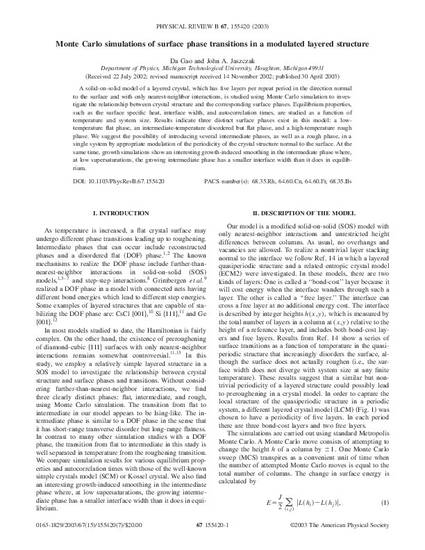
A solid-on-solid model of a layered crystal, which has five layers per repeat period in the direction normal to the surface and with only nearest-neighbor interactions, is studied using Monte Carlo simulation to investigate the relationship between crystal structure and the corresponding surface phases. Equilibrium properties, such as the surface specific heat, interface width, and autocorrelation times, are studied as a function of temperature and system size. Results indicate three distinct surface phases exist in this model: a low-temperature flat phase, an intermediate-temperature disordered but flat phase, and a high-temperature rough phase. We suggest the possibility of introducing several intermediate phases, as well as a rough phase, in a single system by appropriate modulation of the periodicity of the crystal structure normal to the surface. At the same time, growth simulations show an interesting growth-induced smoothing in the intermediate phase where, at low supersaturations, the growing intermediate phase has a smaller interface width than it does in equilibrium.
Available at: http://works.bepress.com/john-jaszczak/34/
